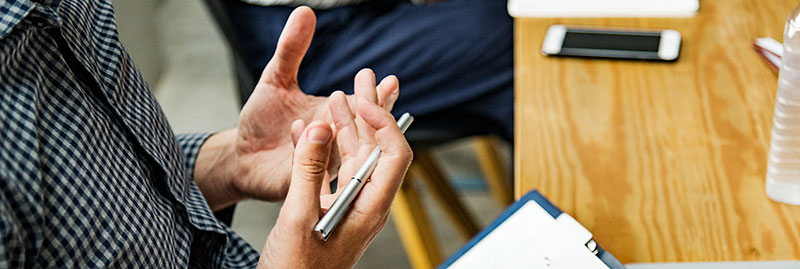We all want to fit in among our peers. When we’re little kids wanting to play together on the playground, when we’re teens in middle school anxious for the approval of our classmates, and when we’re adults out in the job force — no one wants to feel left out or rejected. It’s no different for educators.
In fact, the heavy workload and increasing demands of national standards may sometimes breed competition and may make a teacher’s work environment unusually hostile. But instead of retreating into their own classrooms, many teaching professionals have seen the benefit of showing appreciation to, and collaborating with, their colleagues. Teacher collaboration can transform learning. And that only makes sense — when people look for the good in each other and work hard to support each other, don’t things generally turn out for the better?
In fact, collaborating teachers can in many ways lessen the burdens they face. By observing each other, and meeting together, teachers can come up with strategies that unite their teaching practices school-wide, and the consistency that results can have a tremendously positive impact on students. But let’s break things down.
How exactly can teachers collaborate?
There are more than a few ways as you can probably imagine, (25 in fact, if you’re interested), but we’ve narrowed it down to two that can be implemented for effective results. What have some schools done? What evidence is there to support these strategies for teacher collaboration actually work and have tangible results? Let’s dig in!
Observation and Reflection
How can you learn from other teachers, and learn how you can improve? One way is by getting peer feedback via classroom observation. For many teachers, this phrase may cause some uneasiness. But the kind of observation we’re talking about is peer-to-peer observation, a way to find allies, not critics. Sarah Pazur, executive director at FlexTech High School in Michigan, puts it this way, “When your principal tries to coach you, they’re in an evaluative role. But a fellow teacher is a peer ally, someone who is in the trenches with you, doing this work in their own classroom.” Read more about collaboration at FlexTech here.
What would this kind of allied observation look like? A group of teachers observes another’s teaching and provides meaningful feedback. Not for the purpose of pointing fingers at what a teacher is doing wrong, but instead to learn from what they’re doing right, and perhaps offer some suggestions. Each teacher in the group would be subject to this observation, which means no one gets singled out or left out. And if classroom observation just isn’t your cup of tea — or that of your fellow teachers — you can still give feedback and collaborate. Think of your challenges in the classroom, as well as things you know that work. How do your students respond to different methods of teaching? What kind of commendation do you give them? Talk about those things. When and how?
Post-class observation, or self-reflection, small groups meet to discuss what they’ve learned — and come up with practices to streamline and create consistency in their teaching. For example, they may want to answer questions like ‘How do we respond when a student answers a question incorrectly? Do we immediately correct them or try to get them to dig deeper? How do we handle a class disruption? Do we explain why it’s disrespectful, do we offer a series of warnings? If so, how many, and what is the end result? How do we commend students when we’re proud of them?’ Finding answers to these kinds of questions will unite teachers in what they’re trying to accomplish — give students the education they deserve, and help them to learn in a way that works. For teachers, it can take away the frustration of misaligned practices, but consistency is especially beneficial for students. When they know what to expect, and are treated the same in certain circumstances by all of their teachers, school becomes a more positive, less stressful place to learn. See this in action at Pearl-Cohn High School — and note the results.
Examine the Data — And What’s Behind It
The second aspect of teacher collaboration is getting on the same page with your students. This could easily be a direct result of class observation. But standing on its own, being aware of your students and what they need, as a whole school community, will transform learning and school culture. Meeting in small groups to discuss your students, their academic strengths and weaknesses, and their emotional ones too, is one of the most powerful ways teachers can collaborate.
Some schools have found it beneficial to examine the data about their students, making it easy to identify those who are struggling. But teachers have tools at their disposal to dig a little deeper than that. Because of course, what makes up a student goes a lot deeper than the number of absences or that F they have in Biology. What are the tools teachers can use? Their own experience and knowledge of their students.
Teachers can collaborate by discussing their students, yes the ones who are clearly struggling, but also the ones who might be having a tough time in some more subtle ways. Maybe there’s something going on with a student in your class that you don’t know, but the LA teacher across the hall does. Having meaningful, human conversations about students will better help you to identify what that student really needs. And with this knowledge, you’ll be equipped to help, support, even celebrate students when and how they need it. Students who are struggling can be given prompt intervention and help to get on the right track, or depending on the situation, receive the support of a counselor or mental health professional. Students who persevere despite challenges, or share something they care about can get the positive feedback they need to thrive. And think of how powerful it can be when you have a team of fellow teachers with the same goal in mind, and ideas about how to reach it.
Sound a little idyllic? Well how about a High School where over half of graduating seniors earned college credit while in high school? The Professional Learning Community (PLC) model at Franklin Roosevelt Early College High School in Yonkers, New York, got groups of teachers together on a regular basis to talk about students, assess data and meet students where they are as far as academic performance and behavioral or emotional needs. It’s a school that puts students and learning at the center of everything it does, and has been successful at doing so by relying on its strong educator-to-educator network.
So, how can teachers collaborate? By giving each other feedback and support, and focusing on helping students. Why is this collaboration transformational for student learning? It creates a learning environment that is consistent in expectations, is supportive, and is responsive to the ups and downs kids are bound to face. For schools that find it a challenge to give students what they need, it might be helpful to take things from the top down. Give teachers what they need, like time and space to collaborate, and powerful things can happen.
Learn More about PLCs:
DOWNLOAD FREE GUIDE
5 Tips for successful PLC team meetings








